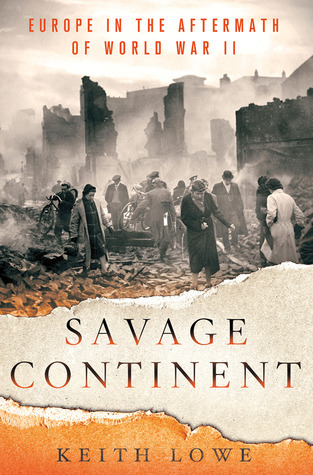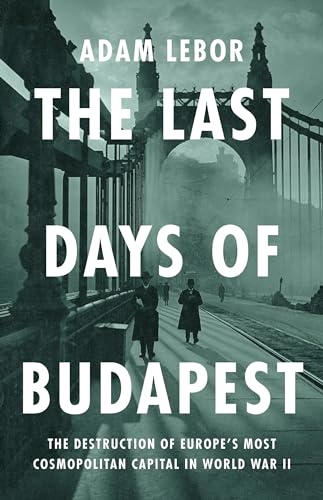
Bloodlands: Europe Between Hitler and Stalin
Book Description
Amidst the echoing gunfire and the cries of millions, Europe’s blood-soaked landscape becomes the stage for an unprecedented tragedy. Timothy Snyder’s *Bloodlands* plunges into the harrowing depths of the brutality inflicted by Hitler and Stalin, revealing the interconnected fates of the regions caught in their devastating grip. From the mass executions to the forced famines, each page unveils a new layer of human suffering and resilience. As alliances shift and ideologies clash, the gripping narrative raises unsettling questions about power, complicity, and survival. How can humanity emerge from such darkness, and what truths will we confront in the aftermath?
Quick Book Summary
"Bloodlands: Europe Between Hitler and Stalin" meticulously explores the region spanning Poland, Ukraine, Belarus, and the Baltic states, where over 14 million civilians perished under the regimes of Hitler and Stalin between 1933 and 1945. Timothy Snyder masterfully intertwines the atrocities of the Holocaust, Stalin’s Great Terror, forced famines, and mass deportations to reveal how competing totalitarian ambitions compounded human suffering. Through harrowing narratives and scrupulous research, Snyder demonstrates that these mass murders were not isolated tragedies but interconnected, shaped by policies and invasions that overlapped in devastating ways. More than a catalog of horrors, "Bloodlands" investigates the moral consequences of mass violence, illuminating the resilience of individuals amidst catastrophic evil, and asking us to reckon with the human cost of ideology and the necessity of historical memory.
Summary of Key Ideas
Table of Contents
Interconnected Mass Murder: Nazi and Soviet Policies
Timothy Snyder’s "Bloodlands" focuses on the geographical corridor stretching from central Poland through Ukraine to western Russia. This region, dubbed the "bloodlands," witnessed unprecedented levels of state-sponsored killing under both Hitler’s Third Reich and Stalin’s Soviet Union. Snyder stresses that these atrocities—often studied separately—overlapped and interacted. Millions died not only because of each dictator’s ambitions but also due to the collision of their policies: Nazi and Soviet campaigns often intensified each other’s violence, culminating in events like the double occupation of Poland. By situating the Holocaust within this broader context, Snyder reveals how the fate of the bloodlands’ people was dictated by shifting frontlines and changing rulers.
State-Engineered Famine and Starvation
Central to Snyder’s narrative is the mechanized starvation of entire populations. The Holodomor in Ukraine, where Stalin’s agricultural collectivization policies induced famine, took millions of lives through calculated deprivation. Hitler’s starvation plans during World War II mirrored this cruelty, aiming to exploit food resources and deliberately depopulate Soviet territories. These orchestrated famines were not tragic accidents but instruments of political control and terror, designed to eliminate perceived enemies and reshape societies for ideological ends. Snyder emphasizes the deliberate nature of these policies, highlighting the bureaucratic efficiency behind systematic murder by hunger.
Complicity, Resistance, and Survival
The book explores the complex spectrum of human responses: complicity, resistance, and survival. Victims in the bloodlands faced moral quandaries under occupation, with survival often necessitating impossible choices. Snyder’s vignettes reveal a gamut of behavior—from those who collaborated or carried out atrocities, to those who risked everything to save neighbors or defy authority. The line between victim and perpetrator sometimes blurred, as individuals navigated overlapping oppressions. By bringing forward the voices and experiences of both victims and bystanders, Snyder asks readers to confront uncomfortable truths about human nature in extremis.
The Dynamic of Occupation and Collaboration
Occupation and shifting alliances further compounded suffering. The region changed hands multiple times: Soviet, then Nazi, then again Soviet. Each regime imposed its own apparatus of violence and control, further entangling local populations. Ethnic tensions were exacerbated, neighbors turned on each other, and institutions were repurposed into tools of repression. Snyder details how Nazi and Soviet strategies exploited local grievances and instrumentalized collaboration, deepening the devastation and leaving societies fractured long after the war ended.
Historical Memory and Moral Reckoning
Snyder concludes by probing the ethical demands of remembering these events. He warns against nationalistic or simplistic histories that ignore the interconnectedness of the bloodlands’ tragedies. Instead, the book advocates for a nuanced, transnational memory that honors victims regardless of nationality or ethnicity. Only by grappling honestly with this grim legacy, Snyder suggests, can Europe move towards moral reckoning and prevent future atrocities born of ideological fanaticism and systemic violence.
Download This Summary
Get a free PDF of this summary instantly — no email required.





